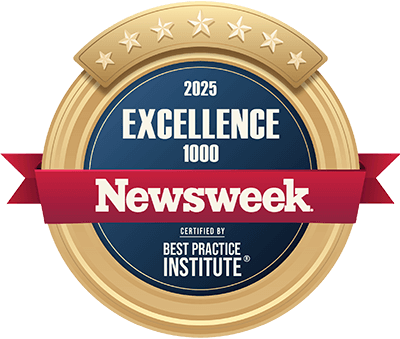Application Support
Setup and Approximate Costs
With 18 years in application support, ScienceSoft delivers full-range support and maintenance services for applications of different types and complexity.
Application Support: the Essence
Application support activities ensure maximized availability, complete and uninterrupted functioning, and sustained application evolution.
- The app support team can include an app support manager, user support agents, DevOps and test engineers, software developers.
- Depending on your application complexity and evolution requirements, its annual support and maintenance budget may vary from $35,000 to $200,000. Calculate your support costs
The scope of application support measures
The broad spectrum of measures can be loosely divided into two groups:
Reactive application support
- Level 1: solving app usage issues and basic problems (help with logging in/out, password reset, etc.).
- Level 2: fixing application operational issues without code changes (e.g., adding new columns to existing data sheets, improving configurations of platform-based applications).
- Level 3: resolving complex problems by introducing changes to the code and database (e.g., for custom software – fixing defects on the code level, for platform-based apps – correcting issues with customizations).
Proactive application support (i.e., application maintenance)
- Introducing new app features and integrations. For custom software - legacy code redesign or application restructuring/containerization.
- Application performance monitoring and optimization.
- CI/CD and DevOps implementation (to facilitate app updating, modernization, or evolution).
- Security code reviews and monitoring.
- Exploratory and regression testing, testing of newly introduced features during the app’s evolution.
- App infrastructure optimization (including cloud).
Support vs. Maintenance: Feel the Difference
- Application support is focused on assisting end users in smooth app utilization and solving any arising issues. It covers troubleshooting, incident management, user education, and UX improvement and aims to enhance app user satisfaction.
- Application maintenance involves regular activities required to keep the app stable, smoothly operating, and aligned with the evolving business needs. Bug fixing, security and compliance monitoring, app scaling and upgrading with new features are some examples of maintenance flows.
While often used interchangeably, these terms refer to distinct activities having different goals and encompassing different task scopes. Both application support and application maintenance play a crucial role in ensuring smooth long-term performance of a software app.
How to Set Up Application Support
The setup plan may vary depending on the application’s scale, functionality and type (e.g., on-premises or cloud, customer- or employee-facing) support needs.
Summing up the vast experience, we share some common stages of setting up application support.
Step 1.
Estimate the scope of your application support
There are several key factors that we consider during this stage:
- Support scope and resources required. The scope and resources differ depending on the application’s type. For example, customer-facing applications require more L1 support resources, while employee-facing ones are likely to generate a higher number of L2 and L3 requests.
- Timeframes. The timeframes depend on the application’s criticality, for example, business-critical applications like ERP require 24/7/365 support.
- Application’s age. Legacy software may experience more issues and entail frequent fixes and updates.
- Application performance requirements (e.g., the average and peak number of intended users, the average and peak load, scalability parameters). Applications with high performance requirements need continuous performance monitoring and recurring performance testing.
- Number of integrations. More integrations imply more scenarios to monitor and more potential issues to resolve. Besides, after each substantial change in integrated software, we need to validate data sharing between the systems and run a regression test suite.
- Standards and regulations (e.g., GDPR, HIPAA, PCI DSS) the application should comply with. To ensure compliance, we design data protection policy and procedures for the support team; perform regular compliance checks, security code reviews, application security scanning, and tuning of cloud security components (if applicable).
Step 2.
Design the application support process
We outline KPIs relevant to your application support needs. A typical list of metrics includes:
For reactive application support:
- First response time.
- User satisfaction score.
- Resolution rate.
- Average time to resolution.
For proactive application support:
- Application availability.
- Application outage time.
- Meant time to recovery.
- Number of implemented change requests.
- Number of change requests in the backlog.
To track the progress of long-lasting app maintenance activities, our support managers also apply general process KPIs like the ratio between the estimated and actual budget for the planned maintenance activity, its earned value, and compliance with the deadlines.
After outlining KPIs, we design ITSM-based standard operating procedures (SOPs) to stipulate all support and maintenance activities.
Step 3.
Prepare the application support
We define relevant specialists for the project depending on the required level of application support:
- Basic end user support - specialists with entry- or mid-level support experience having basic technical knowledge, good communication, and conflict resolution skills.
- Administrative support - specialists with senior- or mid-level experience in application administration and app monitoring, familiar with database querying.
- Technical support and application evolution - software developers with mid-level or senior experience in software engineering, source code and database management.
Then, we decide on the toolkit that is also determined by the application type and support scope. During our projects, ScienceSoft’s teams typically implement:
For reactive application support:
- ITSM or ticket automation software.
- Tools for communication between application users and app support agents (e.g., a customer portal, call center software, email clients, messengers like Microsoft Teams, Zoom, etc.).
For proactive application support:
- Continuous monitoring software for getting metrics on the overall application health, e.g., uptime and downtime, throughput, etc.
- Application performance management (APM) software.
- Code review tools.
- Application security scanning software.
- Cloud cost management tool.
- Software testing frameworks and tools for automated API and UI regression testing.
Step 4.
Launch your application support
At this stage we:
- Negotiate the service level objectives and KPIs, a pricing model (depending on the scope of outsourced support activities, e.g., monthly fee, bucket of hours, T&M, price per ticket), and application support costs with the customer.
- Sign a collaboration contract and an NDA.
- Proceed to knowledge transfer.
- Configure or customize the selected tools (e.g., for ITSM, continuous monitoring, application performance management, etc.) to meet the customer’s support needs.
Our team schedules planned activities for weekends or non-working hours. To ensure that app maintenance doesn’t cause work disruption, we inform users on upcoming activities.
Consider Professional Application Support Services
Since 2007 in application support services and 2008 in ITSM, ScienceSoft’s teams provide full-range reactive and proactive support activities to ensure maximum availability, stable functioning, and swift evolution of your apps.
ScienceSoft as an Application Support Provider
- 18 years in application support services.
- 17 years in ITIL-compliant IT service management.
- Over 1,400 satisfied customers from around the globe: the US, Europe, Asia, Australia, New Zealand, and many more.
- Hands-on experience in support of complex, distributed modular applications.
- Strategic partnerships with Microsoft, Amazon, ServiceNow,
- Quality-first approach based on a mature ISO 9001-certified quality management system.
- ISO 27001-certified security management system based on comprehensive policies and processes, advanced security technology, and skilled professionals.
Our awards, certifications, and partnerships
Benefits of Application Support by ScienceSoft
Feasibility analysis
Before we start, we analyze TCO and ROI of supported apps and assess how these financial estimates will improve as the result of our support services.
KPI-centered approach
Our IT support activities and service quality are reflected in regular reports with clear metrics (e.g., application availability, user satisfaction, Mean Time to Recovery) for strict compliance with service level objectives.
Flexibility
We ensure flexibility in pricing and SLA for application support services.
Application Support Tools We Use at ScienceSoft
Clouds
DevOps
Containerization
Automation
CI/CD tools
Monitoring
Monitoring tools
Application Support Sourcing Models
Application Support Costs
The cost of application support ranges between $35,000 and $200,000 per year depending on the application scale and complexity. Typically, support cost may be estimated as 15-25% of the initial development costs per year, while during the entire application lifespan it may comprise up to 70% of the total cost of ownership.
Cost factors
Costs may greatly differ with regard to the app’s type and requirements.
For ScienceSoft’s consultants, the most significant application support cost factor is the scope of support activities. Besides, based on our experience, we outline the cost factors that are specific to the outsourced application support:
- Required response and resolution time depending on the app’s issues severity (e.g., up to 1-hour threshold for response and 4 hours for the resolution of a critical issue).
- The agreed and extra number of help desk tickets (for reactive application support outsourcing).
- Support team composition and team members’ experience and competencies.
Ballpark estimates
Here are the approximate estimations based on ScienceSoft’s experience for you to get a more precise picture of application support costs:
$35,000/yr
For a stable mid-size application with a low rate of minor change requests
$80,000 - $160,000/yr
For a mid-size application that requires frequent and substantial changes
From $200,000/yr
For a complex enterprise application that require continuous evolution
Let Us Estimate Your Application Support Costs
Please answer a few simple questions about your needs. This will help our team calculate the cost for your unique case much quicker.
Thank you for your request!
We will analyze your case and get back to you within a business day to share a ballpark estimate.
In the meantime, would you like to learn more about ScienceSoft?
- Project success no matter what: learn how we make good on our mission.
- 4,200+ successful projects: explore our portfolio.
- 1,400+ incredible clients: read what they say.


About ScienceSoft
ScienceSoft is a global IT consulting and IT services company headquartered in McKinney, TX, US. We deliver flexible application support and maintenance services to help our clients maximize their applications’ availability and user adoption, minimize the number of software issues, and optimize the application support budget. Being ISO 9001 and ISO 27001 certified, we rely on a mature quality management system and guarantee that cooperation with us does not pose any risks to our clients’ data security.


















